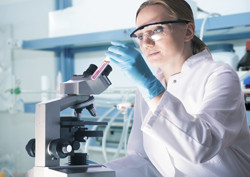Next-generation biocorrosion research
The acceleration of materials corrosion by microbes is known as biocorrosion or microbially influenced corrosion (MIC) — an expensive problem for a number of industries. Environmentally unfriendly biocides are currently used to prevent and treat biocorrosion. To help find a better approach, the EU-funded 'Initial training network on biocorrosion' (BIOCOR ITN)(opens in new window) project sought collaboration between chemists, material scientists and biologists. The aim was to train scientific and industrial experts that could address problems related to MIC. Within the oil and gas industry, project researchers found that all the sulphide-producing bacteria are mainly responsible for corrosion. Important genes involved in the process were also identified, which could serve as biomarkers to support risk assessment. Field tests were also performed, allowing the effect of biocides and flow rates inside pipeline to be examined. In the domain of inland and offshore energy production plants, cooling systems are particularly prone to corrosion by microorganisms. In aerobic conditions, Marinobacter, Alteromonas and Pseudomonas species were found on corroded copper alloys tubes in different sites in the world. An integrated electrochemical system to monitor biocorrosion was set up and validated. The influence of chlorination treatment and absorbed biomolecules on the properties of exposed metallic surfaces were studied. Some anti-fouling nano-coatings were also developed and tested to protect the surfaces. Radioactive waste containers stored deep underground are also at risk of biocorrosion. A geochemical study, coupled to electrochemical tests, yielded relevant data about corrosion rates, the mechanism involved, the concentration of soluble chemicals and the kind of corrosion products. These data will allow researchers to better model biocorrosion processes over time, and develop better ways to recognise and deal with the problem. A new generation of skilled researchers will take these advances forward thanks to the core training aspect of the BIOCOR ITN initiative.







